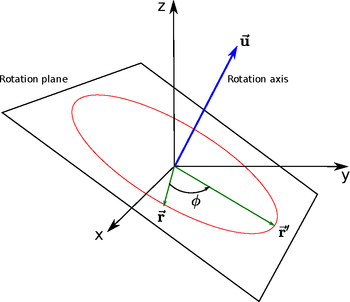Difference between revisions of "Rotations using quaternions"
From Robotics
| Line 1: | Line 1: | ||
{{Navigation|before=[[Multiplication of quaternions]]|overview=[[Quaternions]]|next=[[Realization of transformations]]}} | {{Navigation|before=[[Multiplication of quaternions]]|overview=[[Quaternions]]|next=[[Realization of transformations]]}} | ||
| + | |||
| + | [[File:quaternion-rpy.png|right|350px]] | ||
| + | Usually rotations are defined by 3 angles, either [[Euler angles|Euler]] or [[Roll-Pitch-Yaw]] angles. So three successive rotations around three different axes lead to a combined rotation, that can be described by a single rotation matrix. Such a combined rotation is equal to a rotation around a certain axis in three-dimensional space about a certain angle. This is shown in the figure on the right. Using quaternions, a rotation | ||
| + | |||
| + | |||
<!-- | <!-- | ||
Revision as of 14:28, 2 September 2015
| ← Back: Multiplication of quaternions | Overview: Quaternions | Next: Realization of transformations → |
Usually rotations are defined by 3 angles, either Euler or Roll-Pitch-Yaw angles. So three successive rotations around three different axes lead to a combined rotation, that can be described by a single rotation matrix. Such a combined rotation is equal to a rotation around a certain axis in three-dimensional space about a certain angle. This is shown in the figure on the right. Using quaternions, a rotation
